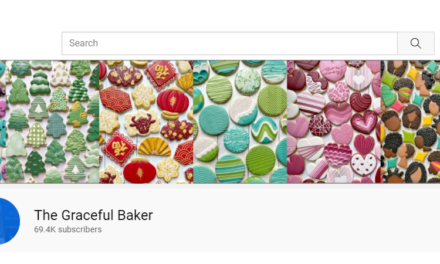In Friday 5s: Is your sweet spot ready to go? Mailchimp makes a decision that should frighten creators in almost every industry. Get an interesting perspective on the evolution of fan roles in Web3.
5 things to do
In the Content Inc. business model, identifying your “sweet spot” is the first step. A sweet spot is the intersection of a knowledge or skill set – something you have a competency in – and a specific audience desire or pain point.
You must uncover a content area on which to base your business and attract an audience over time. Here are five things to do to arrive at your sweet spot:
1. Start with this brainstorming exercise: Label two columns – knowledge areas and special skills. Under each category, identify what you know or do that the average person does not. Add as many as come to mind — more is better at this point.
2. Don’t necessarily follow your passion: Some people refer to the creator industry as the passion economy. Joe Pulizzi, who founded The Tilt and created the Content Inc. model, believes that term is imprecise. As NYU professor Scott Galloway repeatedly says, “Follow your talent, not your passion.”
Invest in your expertise: Educate yourself further on the chosen topic in which you have expertise and talent. Over time, you’ll uncover the opportunity for a content business.
3. Identify the audience: Your knowledge or skill level, while important to you, doesn’t mean anything if it can’t help your audience. It’s the mix of what you know and what an audience needs that completes the sweet spot.
The model doesn’t work without knowing the audience inside and out. Your idea of the “who” doesn’t have to be perfect, but it needs to be detailed enough that you can clearly visualize this person in your head as you develop content. Doug Kessler, co-founder of the UK agency Velocity Partners, says the sweet spot is “the thing your company knows better than – or at least as well as – anyone else in the world.” Understanding the “who” gives you the context you need to make this happen.
4. See sweet spots come together: Alessandra Torres is a New York Times bestselling author who has written over two dozen novels. Writing books would fall onto her knowledge area/skill set list. Five years after starting her writing career, other writers contacted her with questions – How did she get started? What publishing tools did she use? How do I get on the bestseller list? Those inquiries helped her discover an audience with a desire – aspiring authors.
Alessandra Torres turned that sweet spot into Alessandra Torre Ink, an educational business with a library of videos, an author conference, membership, and training programs.
Anthony Fasano’s knowledge area is engineering, and his skill set is training engineers on their non-engineer skills. He found civil engineers desired better networking skills – that became the audience pain point to solve. Anthony created a content business that addresses that intersection – Engineering Management Institute. It provides educational information (mostly through podcasts) to tens of thousands of engineers.
5. Pull it together: With your area of knowledge selected and your audience research identifying their desired behavior or pain point to solve, you now know your target audience. Now you’re ready to find your content tilt.
More resources:
Sponsored Content
Looking for a new strategy to help reach your monetization goals?
Here’s how you can do it – Let Mintted help you develop a solid, consistent strategy that’s backed by your personal passions.
We have a tool that helps develop personal products that your fans will want to purchase ASAP – a shoutout to them, following fans back, or sending a personal DM! Your success is OUR success.
At Mintted, we help you develop a workable strategy so your business goals become a reality. Want to grow your audience? Find new revenue streams? Engage and monetize fans?
Schedule your free strategy call with our team.
5 things at the tilt 
- Struggling with content burnout? Joe has a strategy for you. [Content Inc. podcast]
- In the latest episode, Joe and Robert want to see Google’s manager. [This Old Marketing podcast]
- Want to learn more about the Content Inc. model? Check out our Getting Started page or sign up for our free mini-course.
- Have you received your $TILT coin reward? Please be sure that we have your Rally Network ID so we can send rewards your way!
- ICYMI: 2 Content Creation Types That Can Get Readers To Respond
5 things to know
Money
-
Partner up: 74% of marketers surveyed recently say they plan to invest at least a quarter of their social media budgets on content creator partnerships in the next three to six months. (Forbes)
Tilt Take: Content businesses should explain to some of those brands how a partnership on the entrepreneur’s owned channels might be a better option. -
Seeing others: Twitch told its partner-level streamers they don’t have to be exclusive (to the platform) anymore. They can stream on other channels as long as they’re not live on Twitch at the same time. (The Verge; h/t @8BitDylan)
Tilt Take: To keep their partners, Twitch was willing to open up the relationship – that’s how valuable retention is to them.
Audiences
-
Chimp rejection: Without notice or explanation, Mailchimp suspended accounts of crypto-related content creators. As they explained in a letter captured in this Twitter screenshot: “We cannot allow businesses involved in the sale, transaction, trading, exchange, storage, marketing, or production of cryptocurrencies, virtual currencies, and any digital assets.” (Decrypt; h/t MarkBuildsIt in Tilt community)
Tilt Take: Always keep a copy of your database on a hard drive or at least a server under your control.
Tech and Tools
-
Seeing podcasts: YouTube quietly launched a podcast URL for US users. It’s an indicator of the value of podcast play these days. (Tech Crunch; h/t Omar Zenhom)
Tilt Take: Stay tuned to see YouTube’s play for the podcast pie.
And Finally
-
Don’t do popular: Over 40% of Instagram posts are images. Carousels come in No. 2 and Reels at No. 3. Yet popularity doesn’t mean engagement. Reels have the most reach on the platform by a big margin, according to an analysis of 77.6M posts by the HypeAuditor team. (Social Media Today)
Tilt Take: Meta wants you to use Reels more, and evidently, you might want to listen if a bigger reach is your goal.
5 things to read, watch, or hear
- Delve into a revelatory thread by Li Jin, founder of creator venture capital funds, on how Web3 blurs the lines between fan and creator and how fan labor is funded. One of the most significant trends in Web3 is the re-imagining of fandom: the blurring of lines between fan and creator, between canon and “fanon,” and how fan labor is funded and rewarded.
- Does this advice from creators on how to be influencers sound familiar? It will to serious content creators.
- Content entrepreneurs usually are experts at content creation, but handling merch? Not so much. Read the story of Pietra, a company powered up to help creators create a merch revenue stream.
- Is the Creator Economy Still Winner Take All? Devon Murphy delves into the potential to manifest a creator middle class. (h/t Ian Truscott in Tilt community)
- Adding revenue streams around sponsors and advertisers for your podcast often requires a media kit. James Mulvany unpacks what you need to know and shares examples in eight minutes.
the tilt team
Your team for this issue: Joe Pulizzi, Pam Pulizzi, Ann Gynn, Laura Kozak, Marc Maxhimer, and Dave Anthony.
Get more of the Full Tilt stories on TheTilt.com.
Know a content creator who’s going full tilt? DM us or email [email protected]
Want to advertise on The Tilt? Go here.
Or email us at [email protected]
Interested in the tools we use? Check out our Tilt Tech Stack here.
Was this email forwarded to you? Get your own sub here.
Copyright ©2022 Tilt Media LLC All rights reserved.
Update your preferences | Unsubscribe | 17040 Amber Drive, Cleveland, OH 44111







